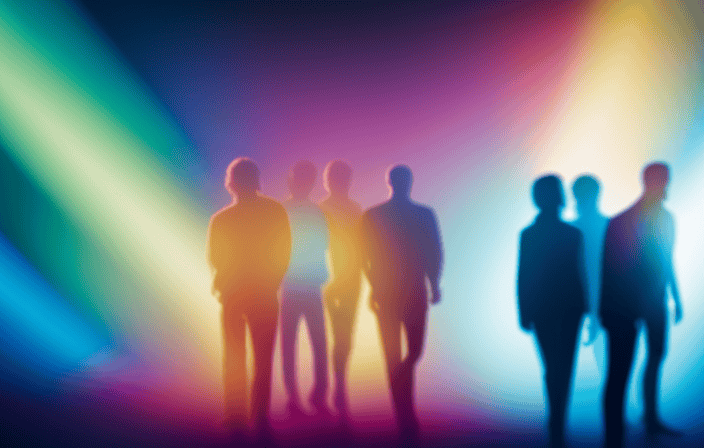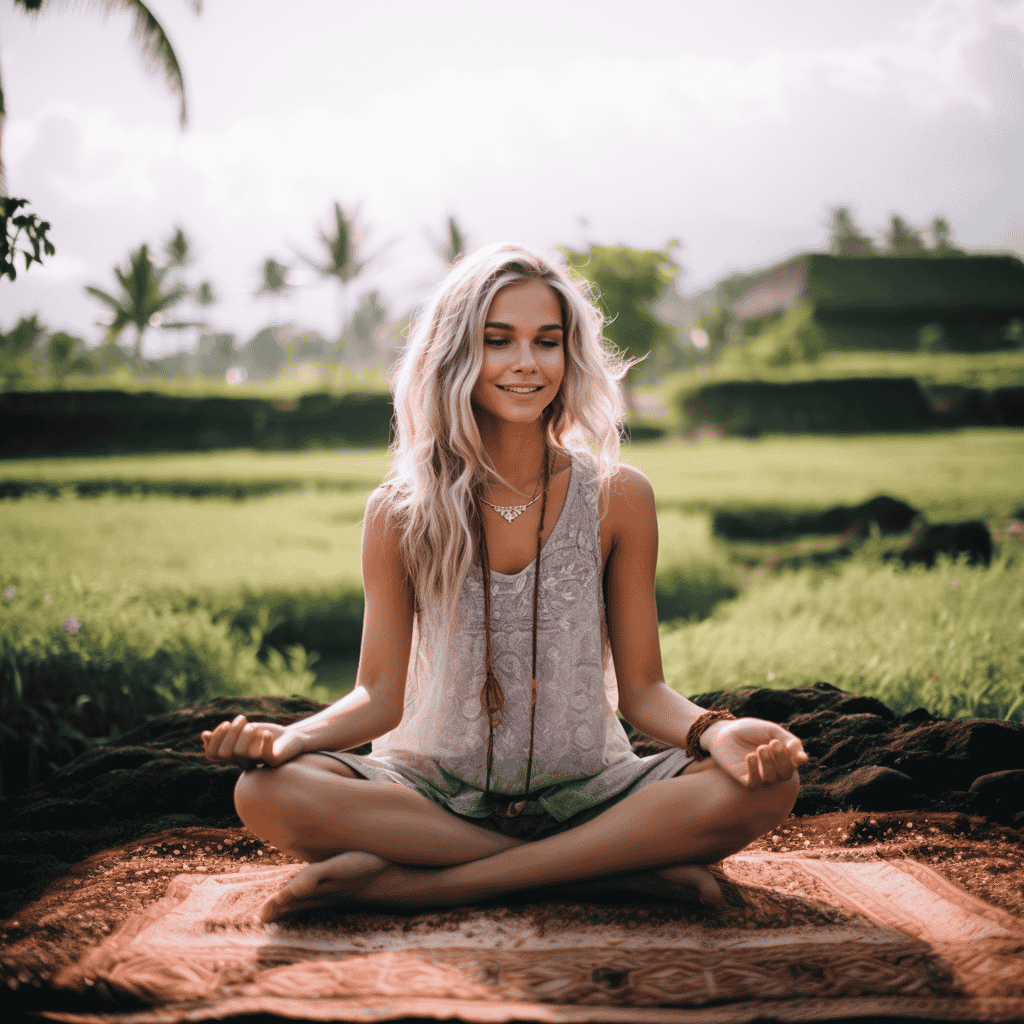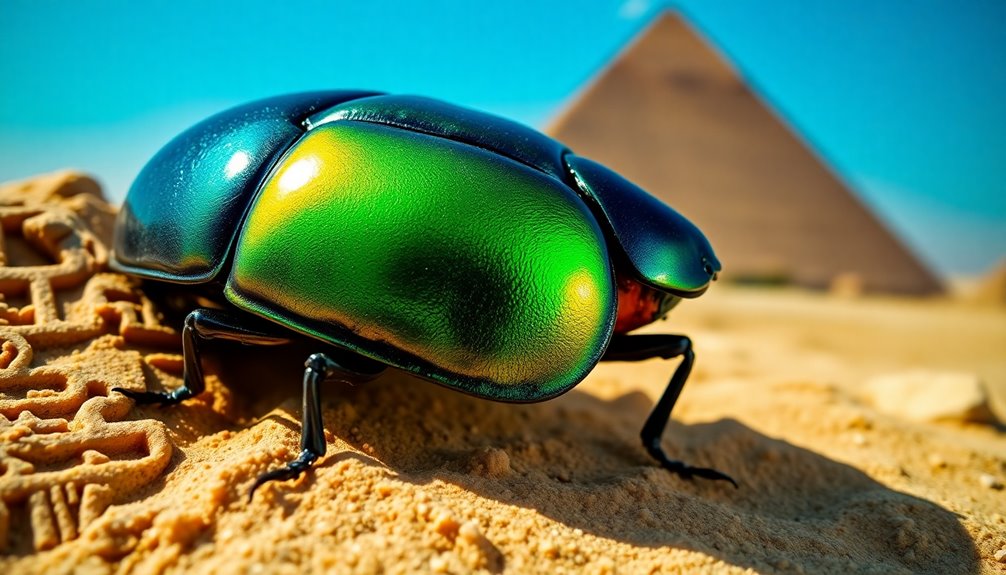Have you ever pondered the unseen forces enveloping us? The auras radiating from our bodies that expose our deepest feelings and spiritual core?
It may seem like something out of the realm of science fiction, but understanding and seeing auras is a fascinating reality. Through the use of specialized photography and the intuitive interpretations of aura readers, we can gain profound insights into our physical, emotional, and spiritual states.
Join me on this enlightening journey as we explore the captivating world of auras, their vibrant colors, and the techniques that allow us to perceive them.
Key Takeaways
- Aura is an energy field that surrounds a person and reflects their physical, emotional, and spiritual state.
- Different aura colors reflect different energies and qualities, such as red for passion and vitality, yellow for intellect and creativity, blue for calmness and serenity, purple for spiritual awareness and connection, and green for growth, balance, and harmony.
- There are various ways to see and interpret auras, including aura photography and aura readers.
- Aura photography uses specialized cameras to capture aura colors, while aura readers have developed extrasensory perception to see and interpret auras.
What is an Aura?
I know that an aura is an energy field that surrounds me and reflects my physical, emotional, and spiritual state. It is like a radiant glow that emanates from my being.
My aura is a dynamic representation of my emotions, constantly changing and shifting in response to my thoughts and experiences. It is a visual manifestation of my inner self, revealing my current state of being to the world.
When I am happy and content, my aura may appear bright and vibrant, while feelings of sadness or anger may cause it to darken or become clouded. Understanding my aura allows me to gain deeper insights into my emotions and better understand the energy I am projecting to others.
It is a powerful tool for self-awareness and personal growth.
Colors and Meanings
Blue auras represent a sense of calmness and serenity. When you see a person with a blue aura, it indicates that they are in a state of peace and tranquility. Blue is often associated with emotions such as relaxation, clarity, and harmony. It reflects a person who is balanced and able to handle stress with ease.
To further understand the meaning of aura colors, here is a table that highlights different aura colors and their corresponding emotions:
| Aura Color | Emotions |
|---|---|
| Red | Passion and vitality |
| Yellow | Intellect and creativity |
| Blue | Calmness and serenity |
| Purple | Spiritual awareness and connection |
| Green | Growth, balance, and harmony |
Interpreting aura patterns can provide insights into a person’s emotional and spiritual state. By understanding the meaning behind each aura color, you can gain a deeper understanding of yourself and others.
Methods and Techniques
By exploring various methods and techniques, I have gained a deeper understanding of my energy field and inner self, unlocking hidden insights and connections.
One method that has been particularly helpful is aura meditation. Through meditation, I have trained my mind to become more focused and attuned to the subtle energies around me. This has allowed me to see and interpret auras more clearly.
Developing extrasensory perception has also been crucial in my journey of understanding and seeing auras. By honing my intuitive abilities, I am able to perceive the energy fields of others and interpret the colors and patterns that I see.
It is important to note that not everyone has the same ability to sense auras, so seeking guidance from professional aura readers can provide further accuracy and insights into one’s energy.
Frequently Asked Questions
Can a person’s aura change over time?
Yes, a person’s aura can change over time. It is influenced by various factors such as emotions, experiences, and personal growth. These changes can impact mental health and reflect shifts in personality traits.
Are there any scientific studies that support the existence of auras?
Scientific evidence supporting the existence of auras is limited. While aura photography can capture energy fields, its interpretation relies on individual beliefs. Further research is needed to validate the concept of auras scientifically.
Can a person have multiple aura colors at the same time?
Yes, a person can have multiple aura colors at the same time. Aura colors represent different energies and qualities, and it is possible for individuals to have a combination of colors reflecting their complex emotional states and spiritual connections.
Are there any specific techniques or exercises to enhance the ability to see auras?
To enhance the ability to see auras, try practicing meditation and visualization techniques. Regularly meditating and visualizing yourself surrounded by light can help develop your perception of aura colors and interpretation.
Can auras be influenced or affected by external factors, such as environment or other people’s energies?
Yes, auras can be influenced by external factors. Music and art can evoke different emotions, which can affect the colors of the aura. Meditation can increase the vibrancy and clarity of the aura.
Conclusion
In conclusion, understanding and seeing auras is a fascinating journey that allows us to delve into our physical, emotional, and spiritual selves. By exploring the colors and patterns of our auras, we can gain insights into our energy and qualities.
Whether through aura photography or consulting skilled aura readers, we can uncover hidden aspects of ourselves and strive for growth and harmony. However, it is important to remember that true understanding of auras requires more than just a mobile app or a quick glance. It demands patience, mindfulness, and an open heart.
As the saying goes, ‘The eyes are the window to the soul.’ Similarly, auras provide a glimpse into our innermost selves, inviting us to explore and embrace our true essence.










